Imagine a scenario where you need immediate access to a folder or file on Windows 11, but an irritating error pops up on your screen “Access Denied.”
Surely the error will frustrate you, but there’s nothing to worry about because this happens more than you can think of. That’s why I tested numerous methods to fix the Access Denied error and sorted out the best among them to eradicate the problem in this article.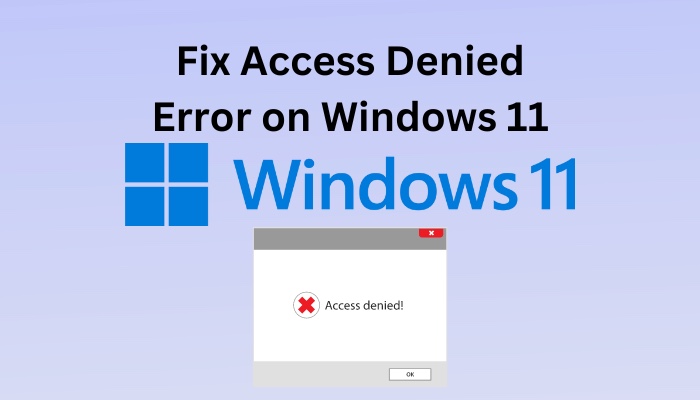
Therefore to terminate the folder access denied issue stay with me till the end.
How to Fix Access Denied Error in Windows 11
When you face the access denied error, you will feel like your hands are tied. Then turn on your invisible administrator account or enable system permission to fix the issue. Furthermore, taking ownership of that file or modifying your registry keys and computer management can eliminate the error.
I have bundled up 7 workarounds you can apply on your Windows 11 to solve the access denied problem. Apply them sequentially until you find the one.
Here are the methods to fix your Windows 11 access denied error:
A hidden administrator account is implemented on Windows and has more access privileges than your actual account. So let’s find out how you can turn on that account and fix your access error.
Here are the ways to turn on the hidden administrator account:
- Click on the Search box on your Windows 11.
- Type cmd, right-click on the Command Prompt, and select the Run as administrator option.
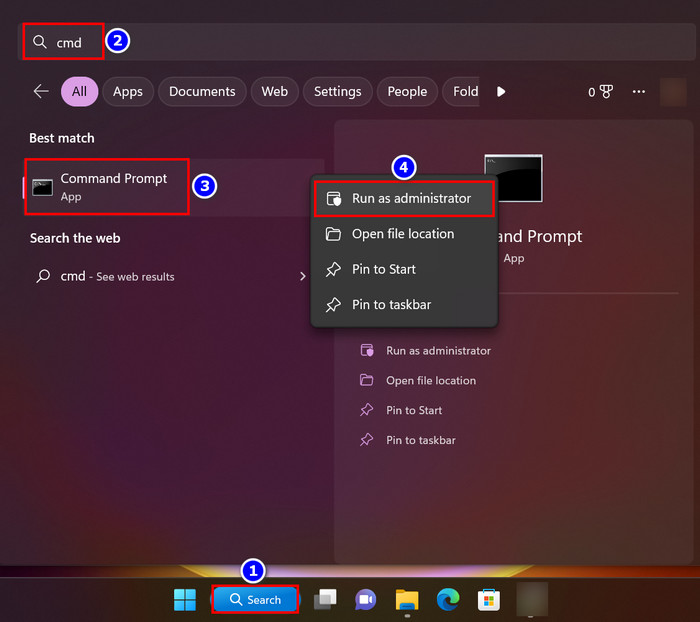
- Hit the Yes button to allow the Command prompt the required access.
- Write net user administrator /active: yes command and press the Enter key.
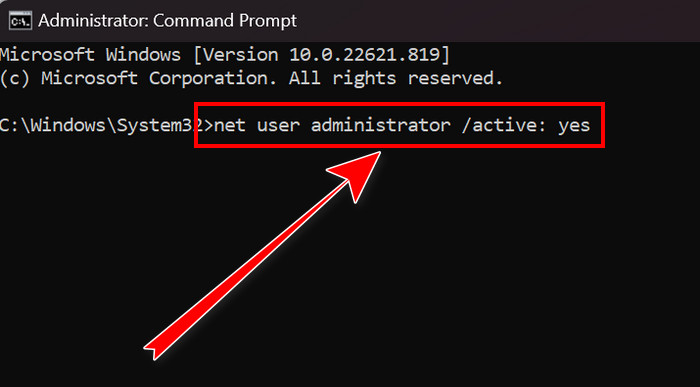
- Sign out from your existing account and sign in to the newly unlocked administrator account.
- Finish your desired tasks because now you have more access and privileges than before. Your access denied error will disappear in this account mode.
- Move back to Command Prompt and type net user administrator /active: no to turn off the administrator account and bring your account back to its original form.
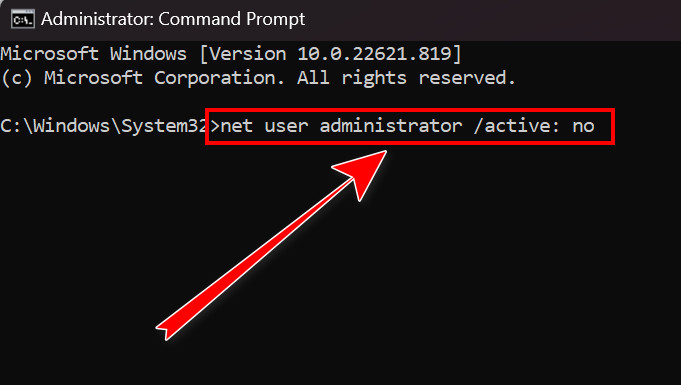
Enabling the secret administrator account will give you desired access, eliminating your error. But if it persists, don’t be disappointed; follow my next adjustment.
2. Set the Account as Administrator
The access denied error can appear when your user account is not set as your administrator. To remove the issue, make your user account the administrator. The process of doing that is stated below.
Here are the steps to set up your Account as an Administrator:
- Open the Run program by pressing the Win+R buttons.
- Copy & paste control userpasswords2 into the box and press OK.
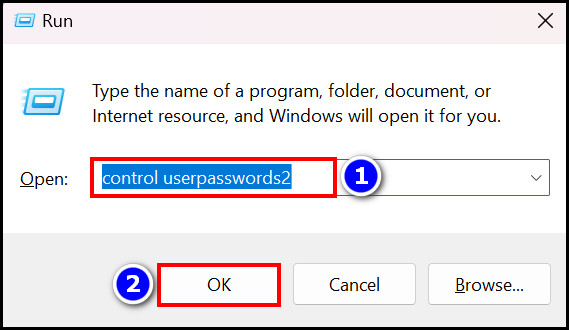
- Enable the Users must enter a user name and password to use this computer checkbox. If you don’t see any option such as that, skip it.
- Click on your account and hit the Properties option.
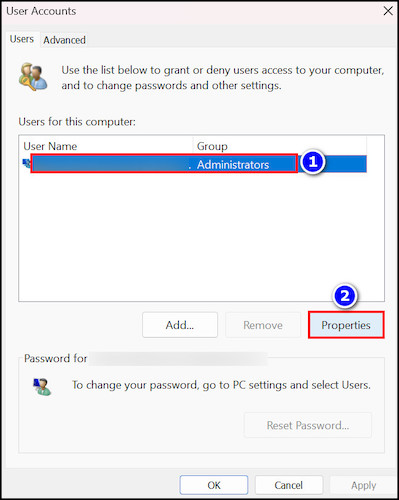
- Move into the Group Membership section.
- Select the Administrator radio button.
- Press the Apply and OK buttons.
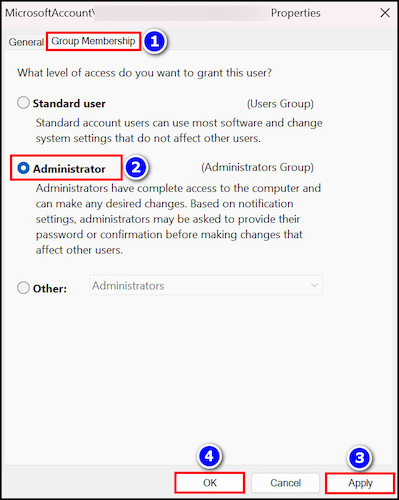
- Restart your device.
Check out your access denied problem again, and you will find your issue is gone. Apply the next method if it’s not gone yet.
3. Test the System’s Permission
When the folder you want to enter has restricted permission, you will not be able to access that folder, and an error will arise. So make sure the specific folder is not restricted by navigating through some steps.
Here is the process to allow the system permission to access your folder:
- Right-click on the folder, app, file or directory you want to access.
- Choose the Properties option.
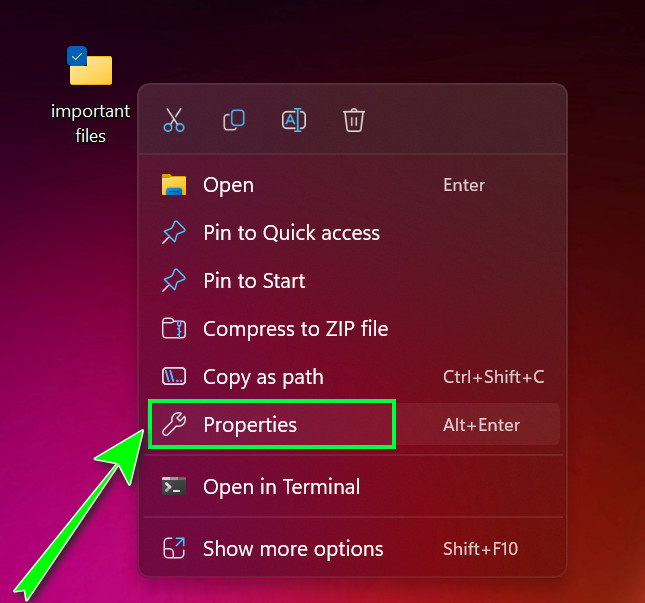
- Navigate to the Security section.
- Click on your username and check whether there is a tick mark beside Full control under the Permission for User box.
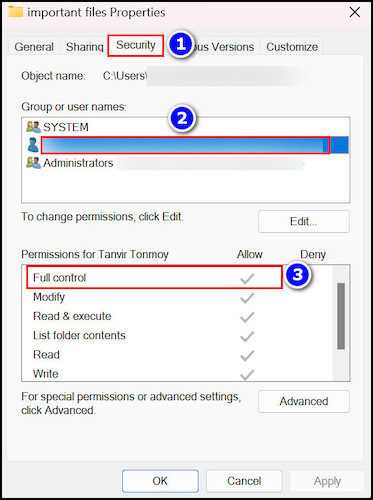
- Select the Edit button if the permission is restricted and Allow all.
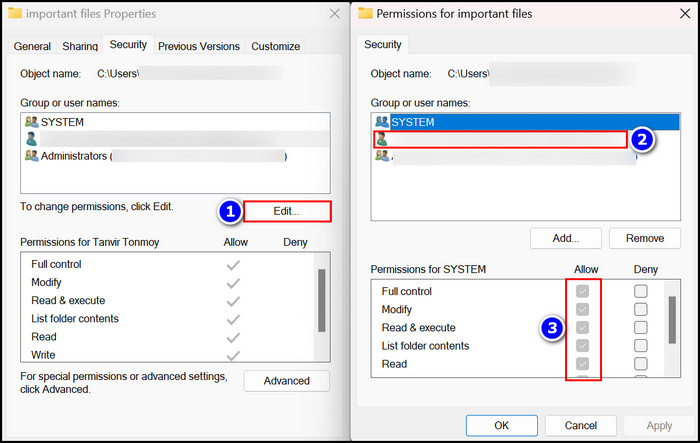
- Hit the Apply and OK keys.
Completing all the mentioned steps allows you to access your file or folder easily. If not, then move to the next workaround.
4. Take Ownership of the Folder
Taking total control of your specific folder will give you access to that folder. The procedures for accomplishing that are stated below.
Here is the process to take ownership of your particular folder:
- Right-click on the folder and choose Properties.

- Navigate to the Security section and select the Advanced button.
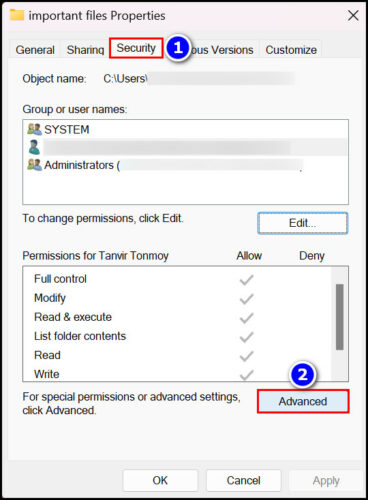
- Hit the Change button next to Owner.
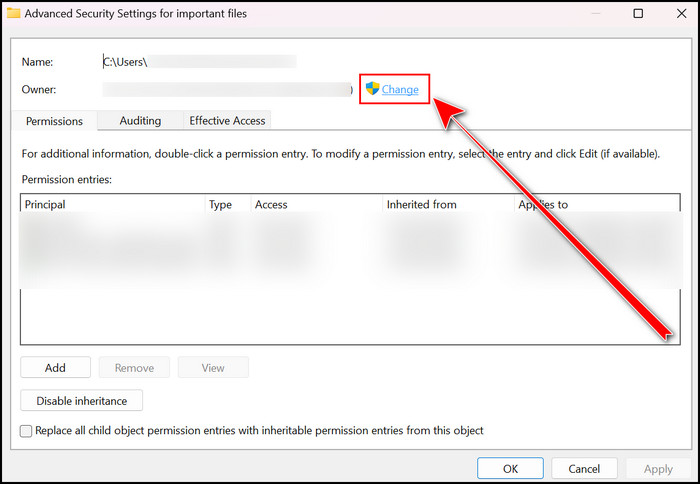
- Write your username or type Administrators in the Enter the object names to select box.
- Press the Check Names option and click on the OK button.
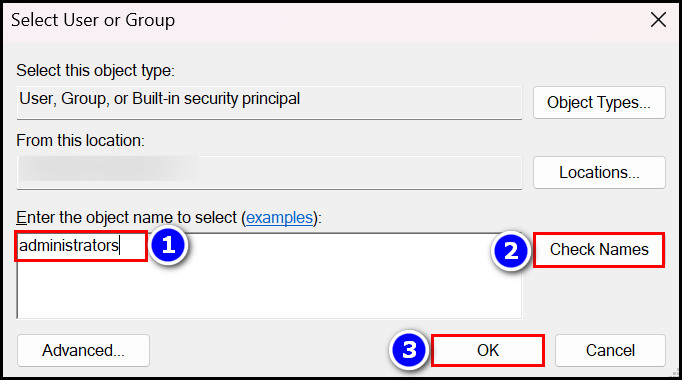
- Enable the Replace all child object permission entries with inheritable permission entries from this object checkbox if it appears at the bottom of your window.
- Press Apply & OK to keep the changes.
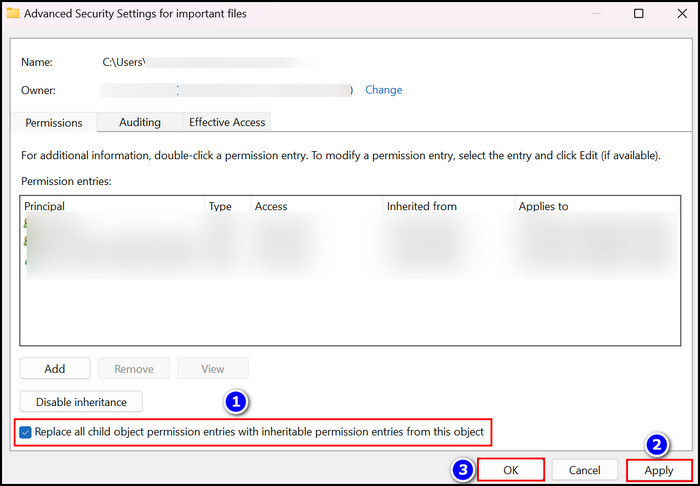
- Restart your device.
Now you have full ownership of that folder and can access it.
Follow the given steps to complete the same process via Command Prompt.
- Open the Command Prompt with administrative rights.

- Type takeown /f “Folder Path” /r /d y and press Enter. In the “Folder Path” give the actual location of the folder.
- Copy & paste icacls “Folder Path” /grant administrators:F / and again hit Enter.
- Reboot your computer.
After finishing these tested customizations, your access denied error will be eradicated.
5. Modify Computer Management
Several users claim that the access issue is solved when they modify their Computer Management. So keep reading the process because this might be the one that you are looking for.
Here’s how you modify Computer Management:
- Move your cursor to the Start icon and right-click.
- Choose Computer Management.
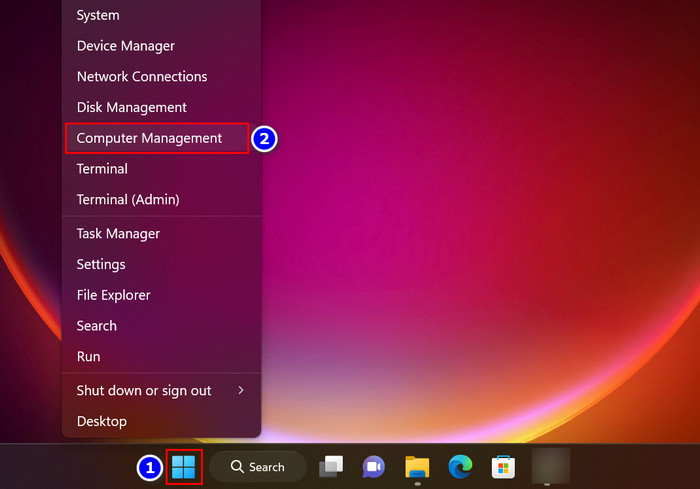
- Expand Local Users and Groups from the left navigation pane.
- Select Users, right-click on the Administrator and choose the Properties option.
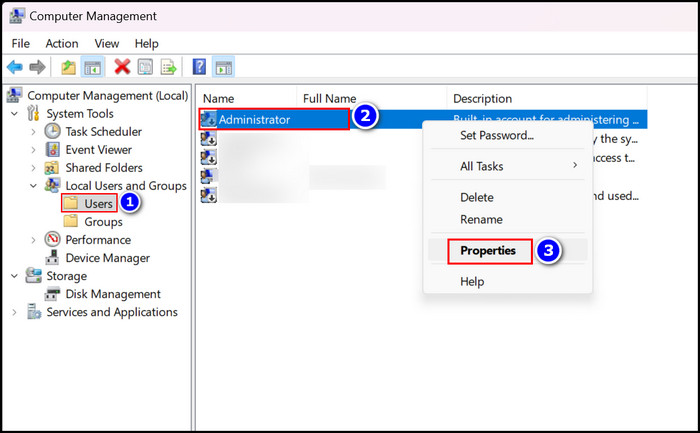
- Disable the Account is disabled checkbox.
- Select the Apply and OK buttons.
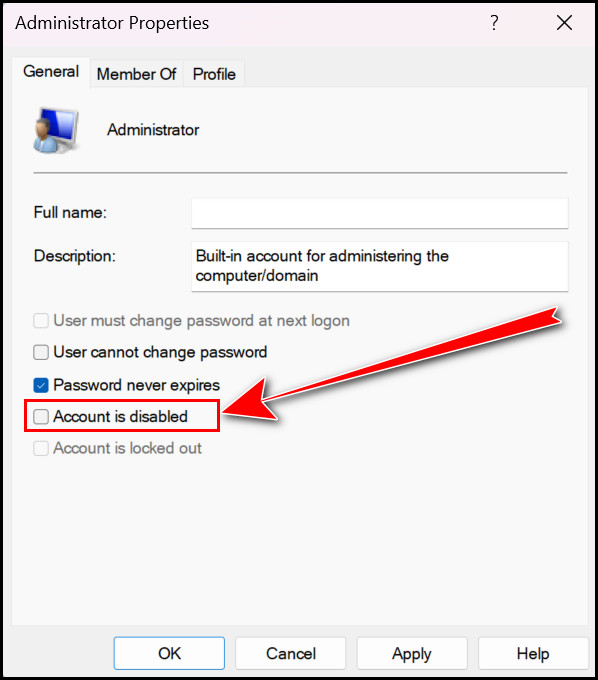
- Move into the Groups section and right-click on the Administrators option.
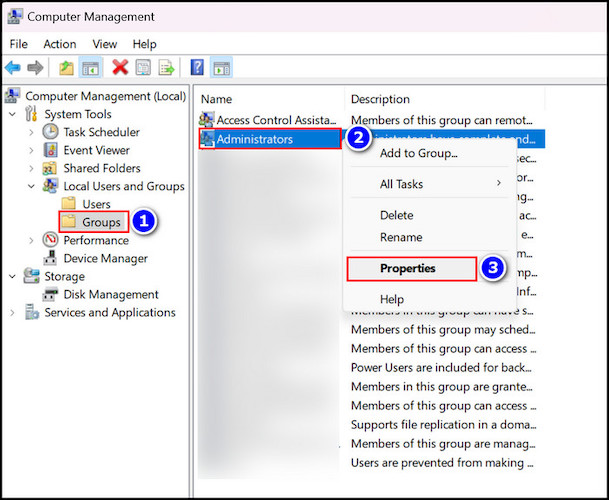
- Choose Properties and select Add.
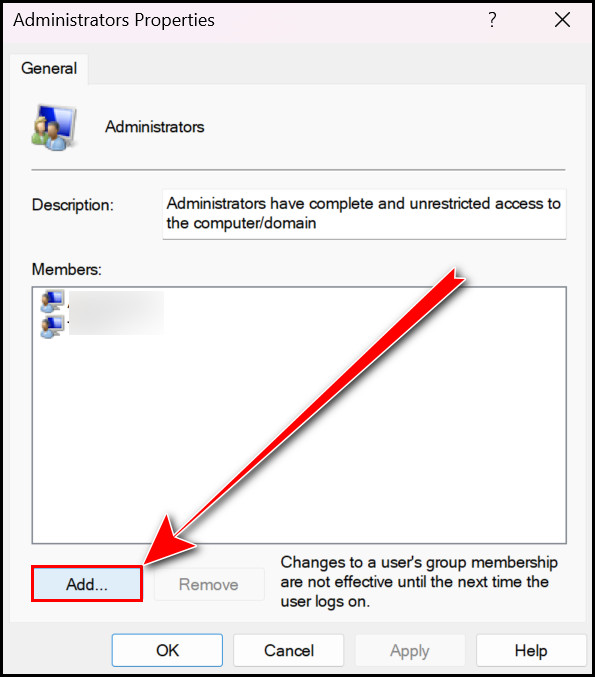
- Type test into the Enter the object names to select box and hit Check Names.
- Press OK and Apply the changes.
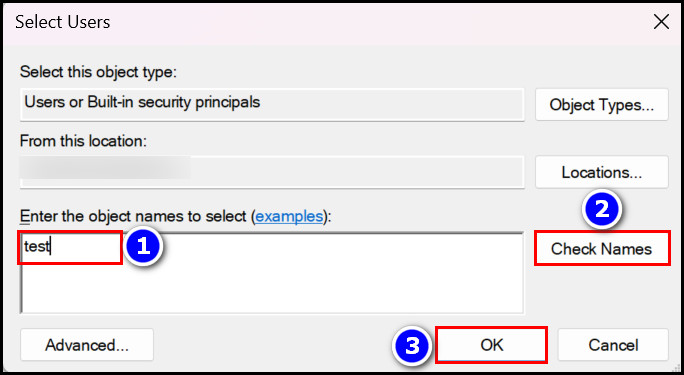
- Restart your device.
Your frustrating error will vanish afterward.
6. Modify the Registry Key
Inserting a new value into the registry editor can fix your access denied error. Although the process sounds complicated, it’s not. Let’s do that together and solve the issue.
Here are the ways to modify the registry key to fix the access denied issue on Windows 11:
- Launch the Run program by pressing the Windows+R keys.
- Type regedit and hit the OK button to open the Registry Editor.
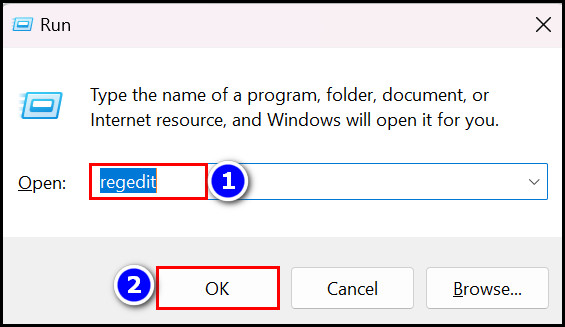
- Go to:
- Computer\HKEY_LOCAL_MACHINE\SYSTEM\CurrentControlSet\Services\LanmanWorkstation\Parameters
- Right-click on the empty space and choose New > DWORD (32-Bit) Value.
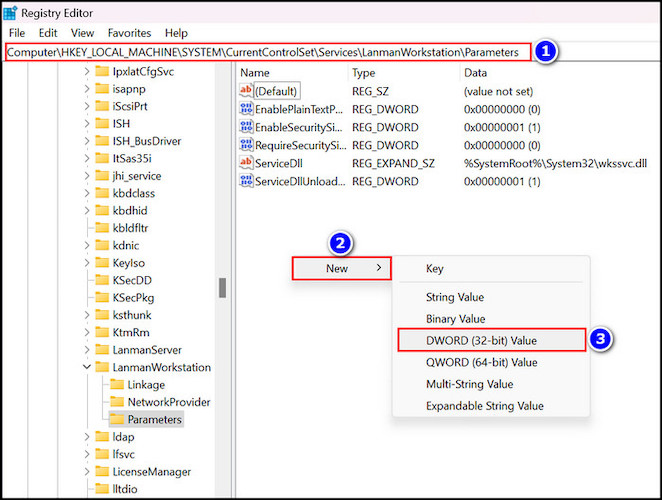
- Name the registry AllowInsecureGuestAuth.
- Double-click on it and enter 1 in the Value data box.
- Press OK.
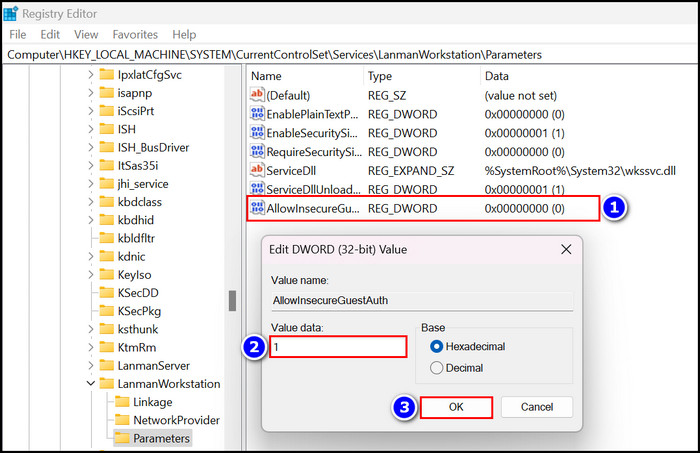
After creating a new entity in your Registry Editor, you can smoothly access the inaccessible folder.
7. Turn Off the Antivirus Software
If you use third-party softwares as your antivirus, it’s time to turn them off. Because they sometimes block some crucial access. As a result, you see the access denied error. So disable your Antivirus softwares to enter your specific folder.
Why Does the Access Denied Error Occur on Windows 11?
The annoying access denied error could appear on your Windows 11 when you don’t have access privileges to that particular folder. The access can be blocked when your user account is not set as administrator. Plus, inaccurate Computer Management and Registry Editor can create the same issue.
Here are the reasons for which the access denied error pops up:
- When the third-party antivirus blocks the access, the error arises.
- The particular folder is restricted.
- Computer management is not perfectly set.
- Inappropriate value in the Registry Editor.
- Don’t have particular folder access privileges.
Now you know the reasons behind the error, and you must avoid all these to make your access navigation smoother on Windows 11. Giving your account administrative rights is always best to avoid such calamities.
FAQs
What does denied access mean?
The denied access means that the file or folder you request to enter has an administrative restriction, so you cannot access it.
How do I fix access denied as administrator?
To fix access denied as an administrator, right-click on the folder, then navigate to Properties > Security > Select User Account > Check Allow Permissions. When Full control is denied, select Edit and Allow all the access.
Ending Remarks
Among the stated methods, there is surely the one that will cure your access-denied error. After finding the right one, your error will disappear like Thanos’s snap.
The processes can look somewhat tricky. That’s why I have displayed them very easily in this content. Apply them accordingly and notify me which one helps you out in your fixing journey.
For further related questions, comment below!
